Master the art of pruning tomato plants with our comprehensive guide. Learn when, why and how to prune for healthier plants and better harvests. Perfect for beginner and experienced gardeners alike.
Pruning tomato plants might seem tricky, but it’s a useful skill that can help you grow healthier plants with more fruit. In this guide, we’ll explain everything you need to know about pruning tomatoes. Whether you’re new to gardening or have been growing tomatoes for years, you’ll find helpful tips here.
Here’s an information chart for Tomato plants (Solanum lycopersicum):
| Aspect | Details |
|---|---|
| Botanical Name | Solanum lycopersicum |
| Common Name | tomato plants |
| Plant Type | Annual |
| Hardiness Zone | Grown as an annual in all zones |
| Sun Exposure | Full sun |
| Soil Type | Well-drained, fertile, loamy |
| Watering | Regular, keep soil evenly moist |
| Growth Habit | Vining or bushy (determinate or indeterminate) |
| Height/Spread | 2-10 feet tall, 2-4 feet wide (varies by variety) |
| Special Features | Edible fruit; various sizes, shapes, and colors (red, yellow, green, purple); requires support (stakes, cages) for vining types; rich in vitamins A and C, potassium, and antioxidants |
Why Prune Tomato Plants?
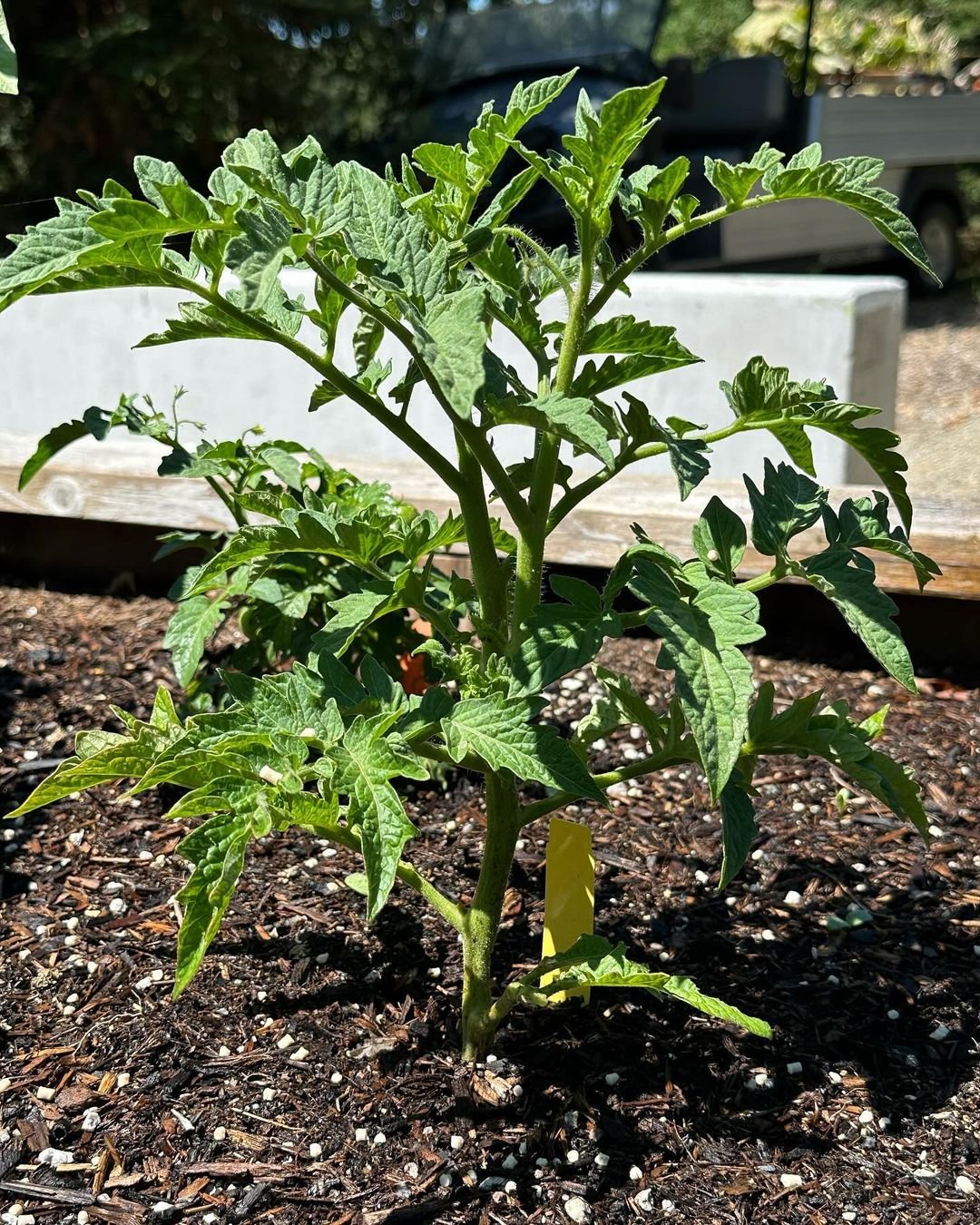
Pruning has several benefits:
- Better air circulation: Reduces the risk of diseases
- More sunlight: Helps ripen fruit faster
- Bigger fruit: Plant’s energy goes to fewer fruits, making them larger
- Easier harvesting: Makes it simpler to pick tomatoes
- Healthier plants: Removes diseased or damaged parts
Types of Tomato Plants
Before pruning, it’s important to know what type of tomato plant you have:
1. Determinate tomatoes
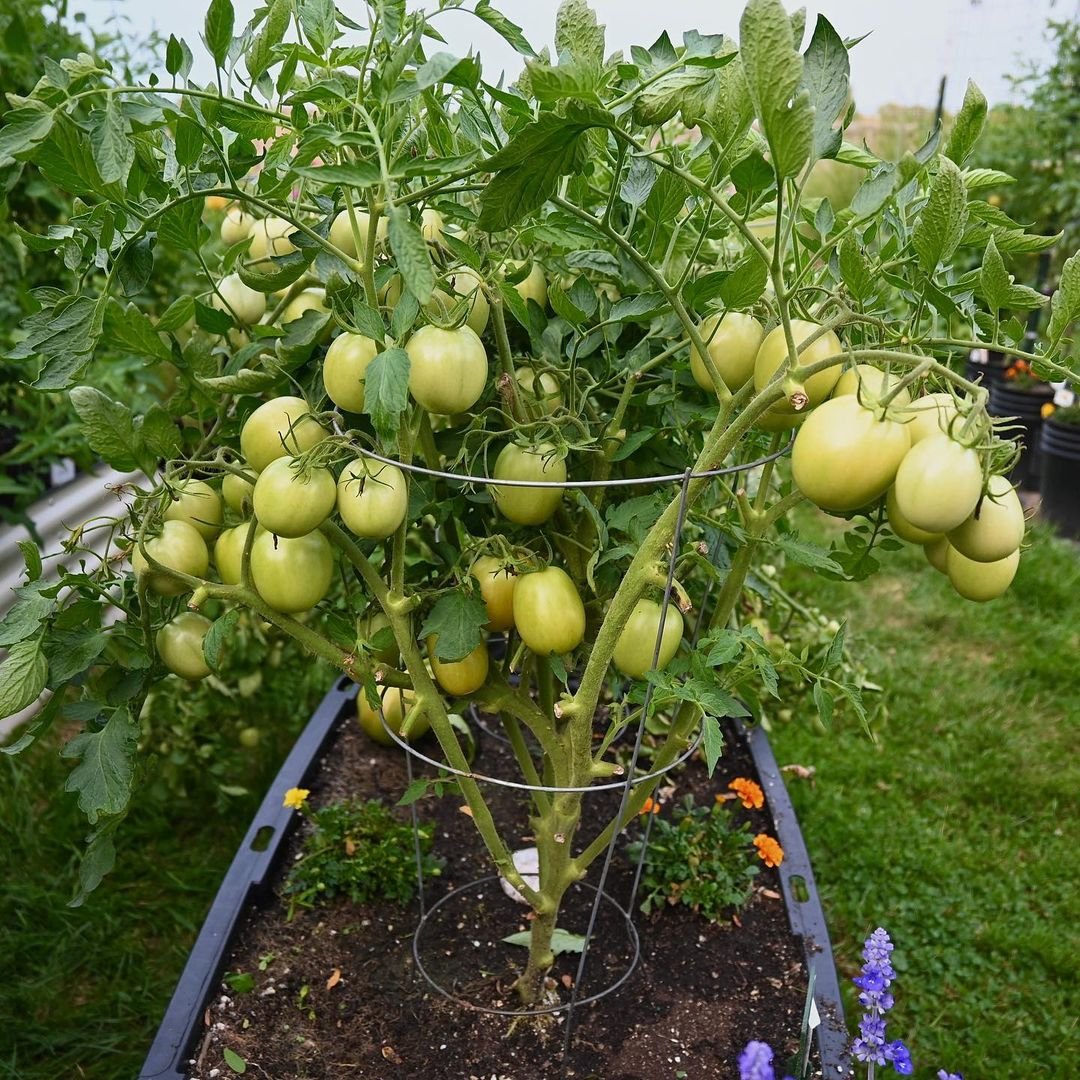
These grow to a set height and produce all their fruit at once. They need less pruning.
2. Indeterminate tomatoes
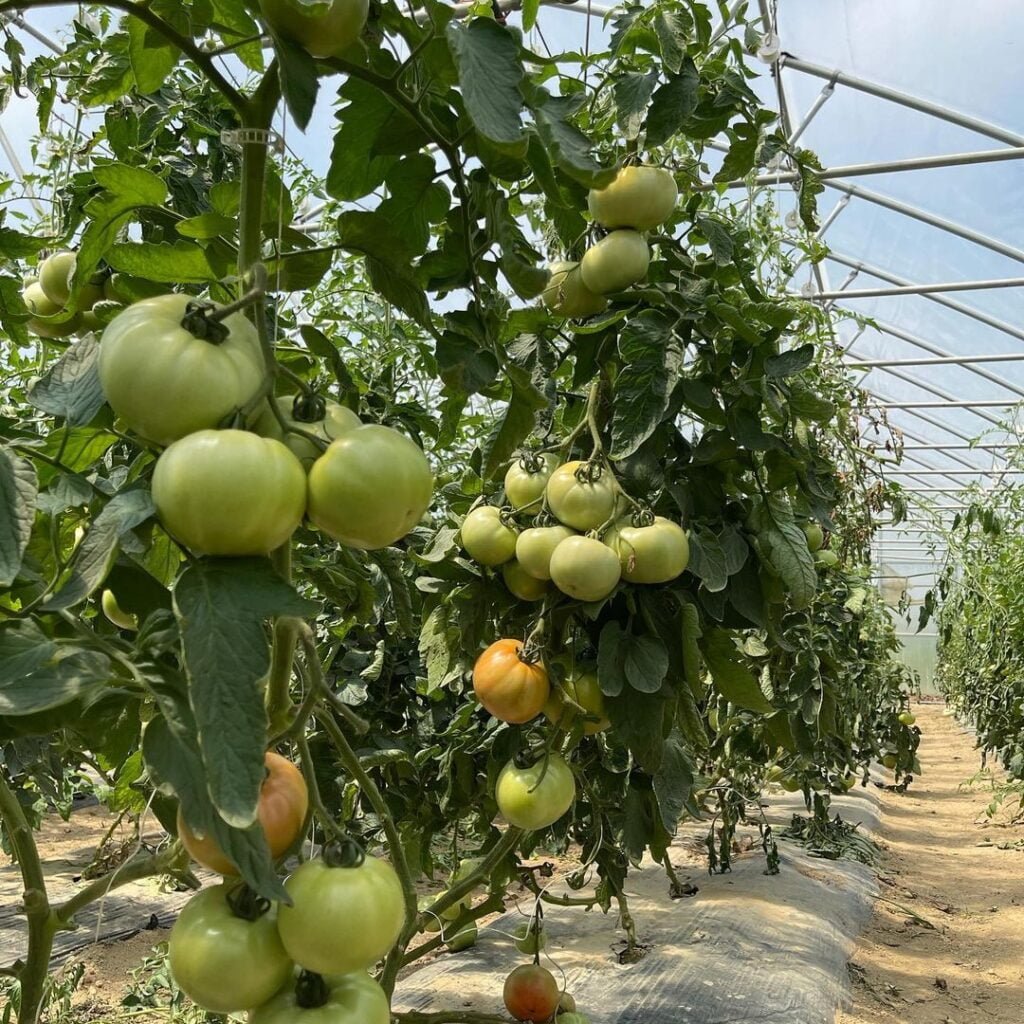
These keep growing and producing fruit all season. They benefit most from pruning.
When to Start Pruning
Start pruning when your tomato plant is 12-18 inches tall. Continue throughout the growing season:

- Early season: Focus on removing suckers (explained below)
- Mid-season: Remove lower leaves and any diseased parts
- Late season: Top the plant to encourage ripening of existing fruit
How to Prune Tomato Plants
Here’s a step-by-step guide to pruning:
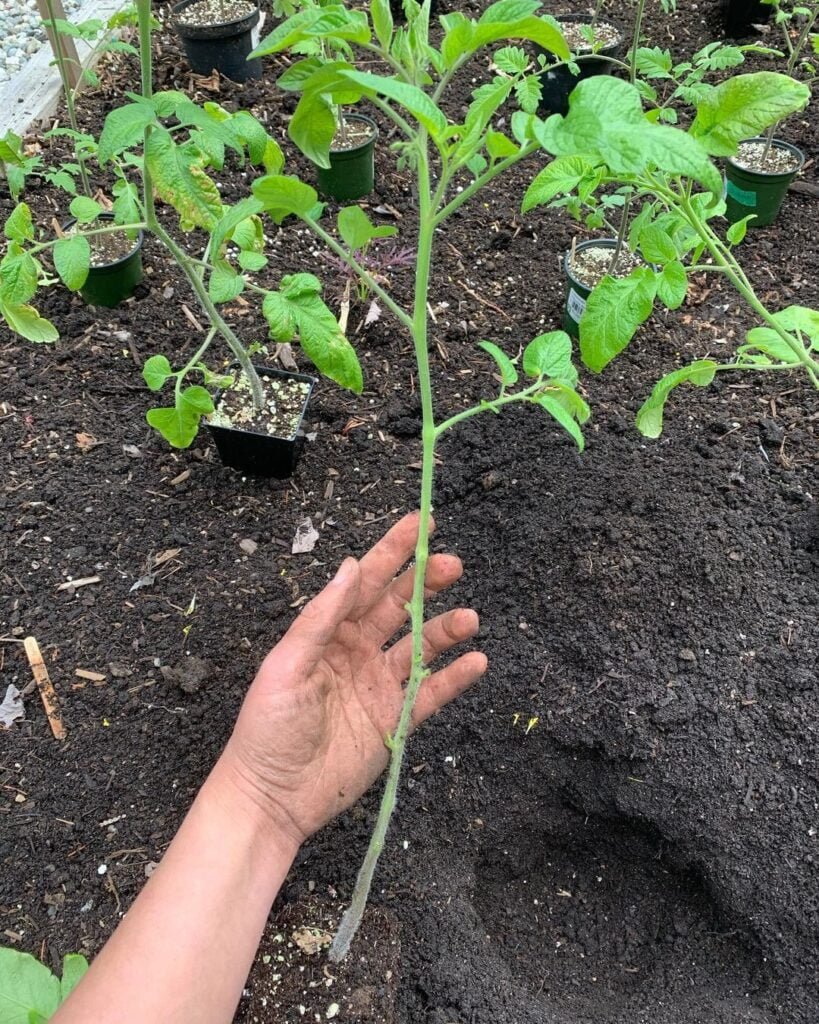
1. Remove Suckers
- Suckers are small shoots that grow between the main stem and branches
- Pinch off suckers when they’re small (2-4 inches)
- For indeterminate varieties, remove all suckers
- For determinate varieties, leave a few suckers below the first flower cluster
2. Remove Lower Leaves
- As the plant grows, remove leaves from the bottom 12 inches
- This prevents soil-borne diseases from splashing onto leaves
3. Prune for Air Circulation
- Remove some inner leaves to improve air flow
- Don’t remove more than 1/3 of the plant’s leaves
4. Remove Diseased or Damaged Parts
- Cut off any yellow, brown or spotted leaves
- Remove any stems that look unhealthy
5. Top the Plant (Late Season)
- About a month before first frost, cut off the growing tip
- This encourages the plant to ripen existing fruit
Tools for Pruning
Use clean, sharp tools to avoid spreading diseases:
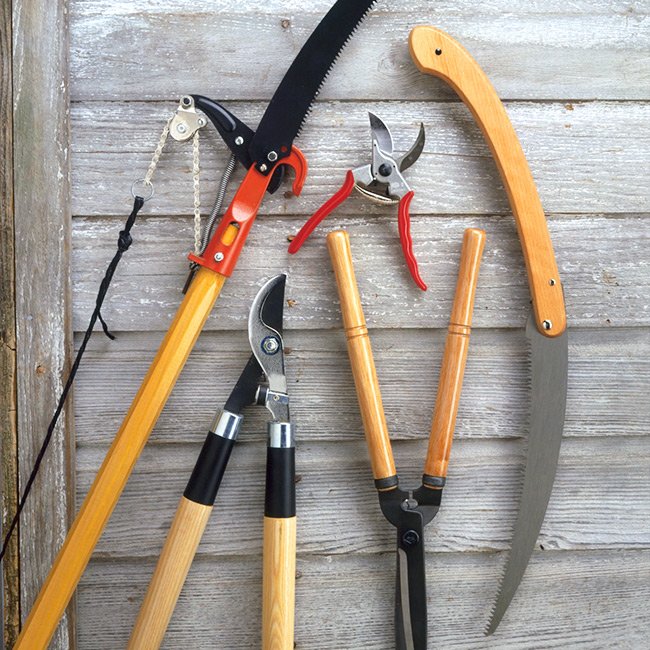
- Pruning shears: For thicker stems
- Clean hands: For pinching off small suckers
- Scissors: For smaller stems and leaves
Always clean your tools with rubbing alcohol between plants to prevent spreading diseases.
Tips for Successful Pruning
Here are some extra tips to help you prune successfully:
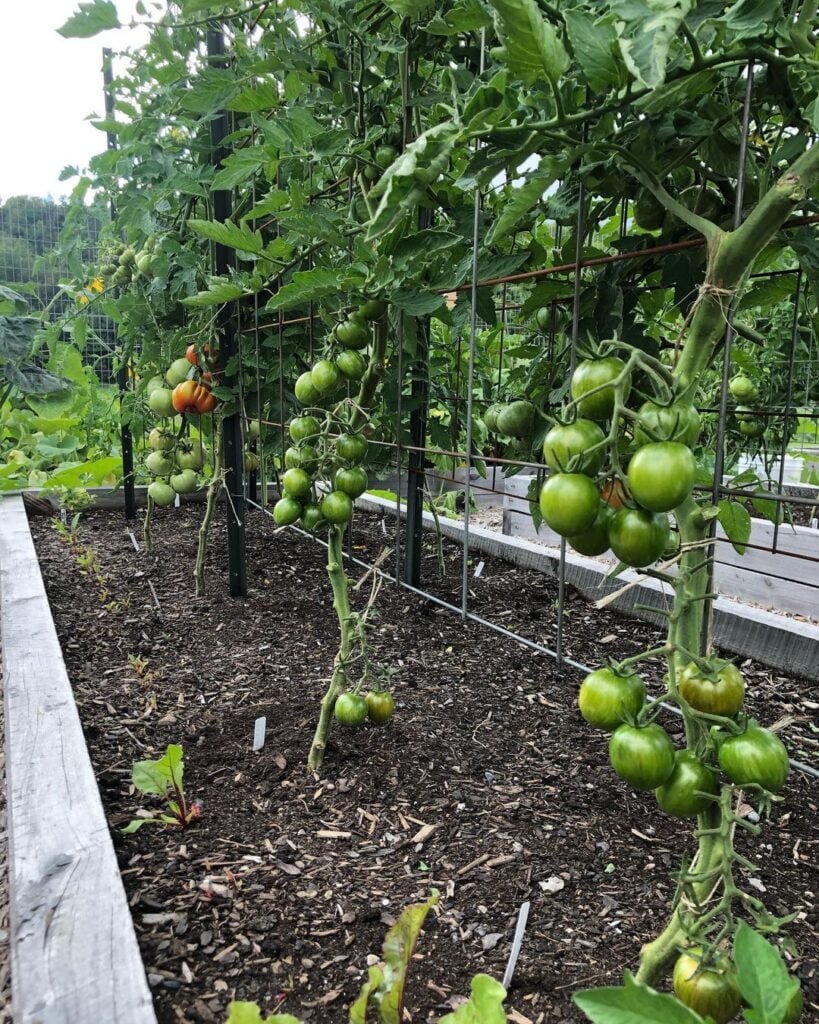
- Prune on a dry day to reduce risk of disease
- Make clean cuts close to the main stem
- Don’t remove more than 1/3 of the plant at once
- Wash your hands between plants to avoid spreading diseases
- Prune regularly rather than all at once
Common Pruning Mistakes to Avoid
Be careful not to make these common mistakes:
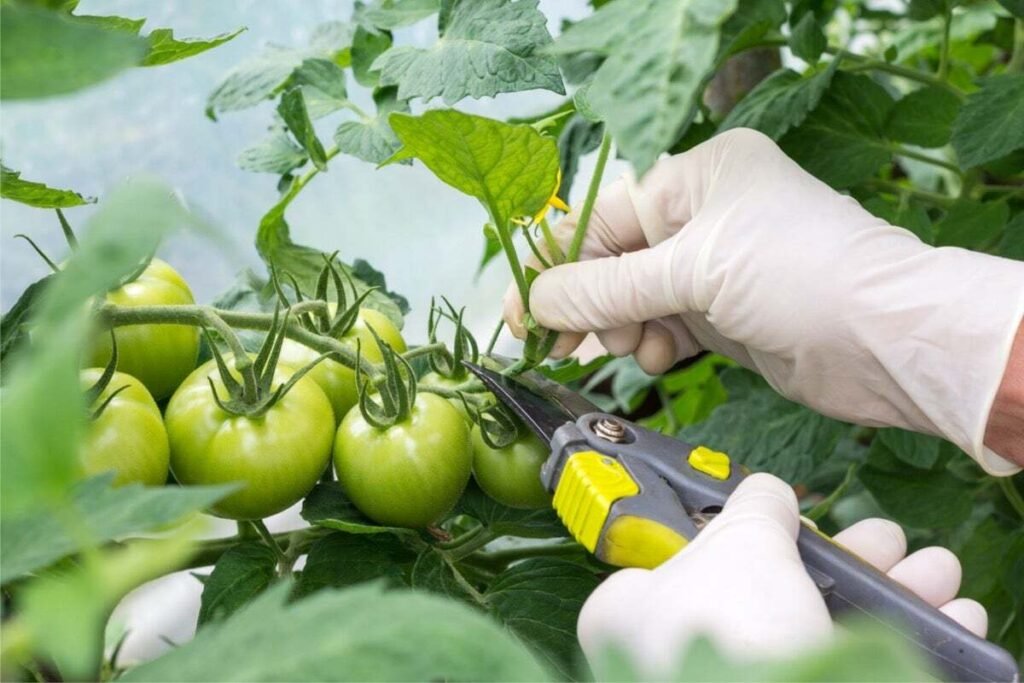
- Over-pruning: Removing too many leaves reduces photosynthesis
- Pruning determinate varieties too much: They need less pruning
- Using dirty tools: This can spread diseases
- Waiting too long to remove suckers: They’re harder to remove when big
- Ignoring the plant’s overall health: Don’t prune stressed plants
Frequently Asked Questions
Here are some common questions about pruning tomatoes:
Q: Should I prune all types of tomatoes?
A: Indeterminate types benefit most from pruning. Determinate types need minimal pruning.
Q: How often should I prune my tomato plants?
A: Check your plants weekly and prune as needed.
Q: Can I eat the parts I prune off?
A: While not harmful, pruned parts aren’t typically eaten.
Q: What if I accidentally prune too much?
A: Don’t worry, tomatoes are resilient. The plant will recover, but might produce less fruit.
Q: Should I prune my tomatoes if I live in a hot climate?
A: In very hot areas, you might want to prune less to provide more leaf cover for the fruit.
Pruning tomato plants is a valuable skill that can lead to healthier plants and better harvests. Remember to identify your tomato type, use clean tools and prune regularly but not excessively. With practice, you’ll become more confident in your pruning skills.
Whether you’re growing tomatoes in a small backyard garden or a larger plot, these pruning techniques can help you get the most out of your plants. Happy gardening and enjoy your homegrown tomatoes!